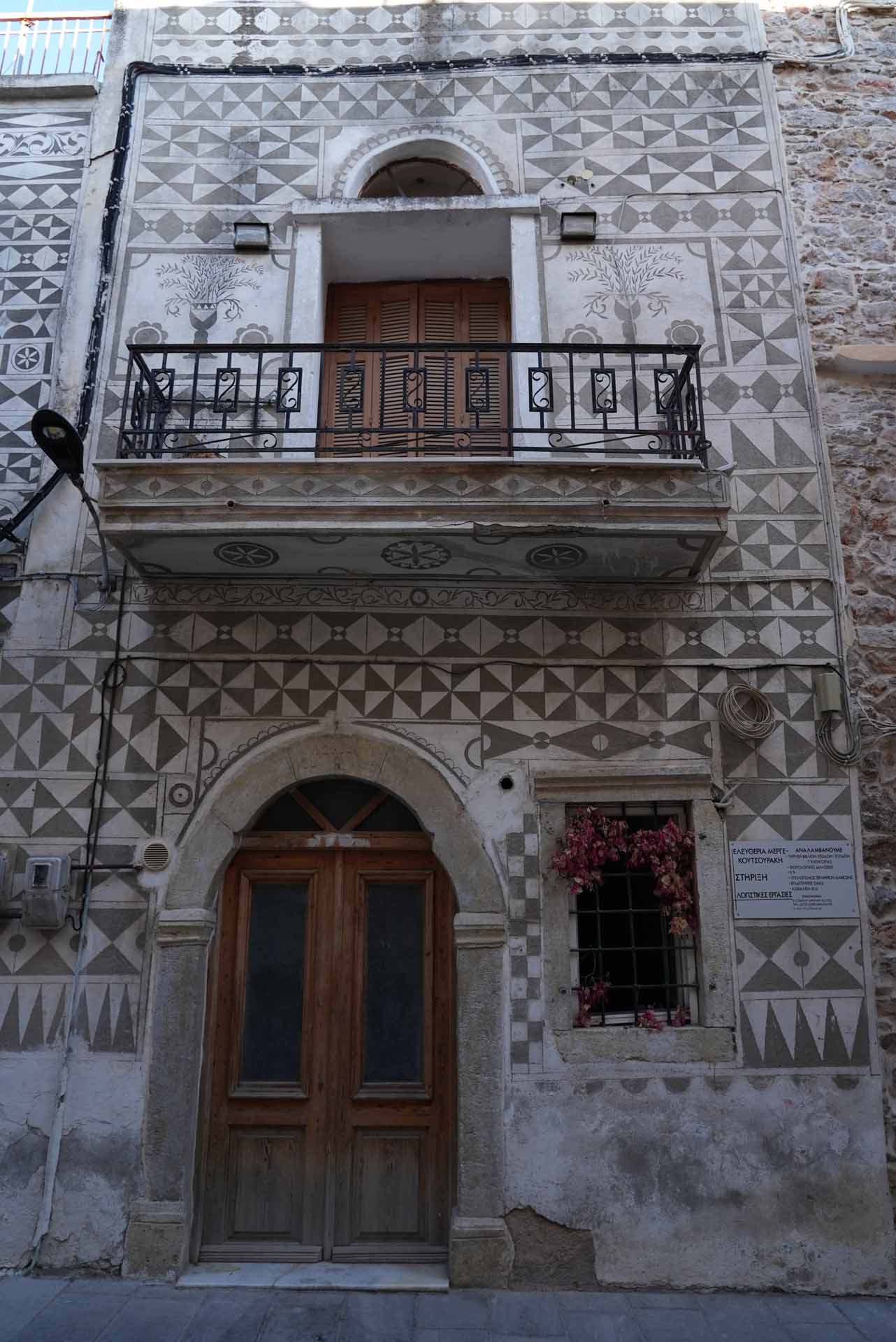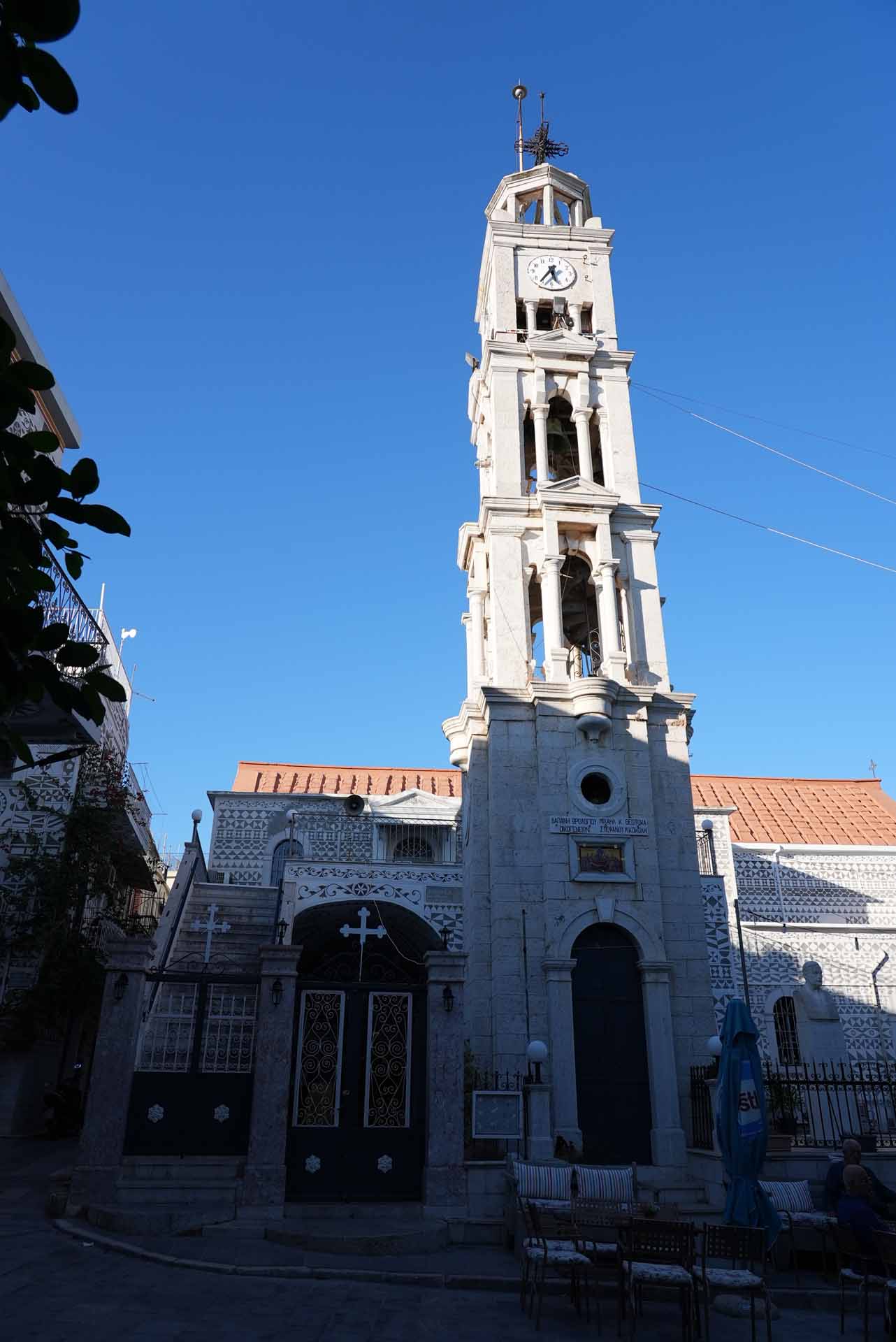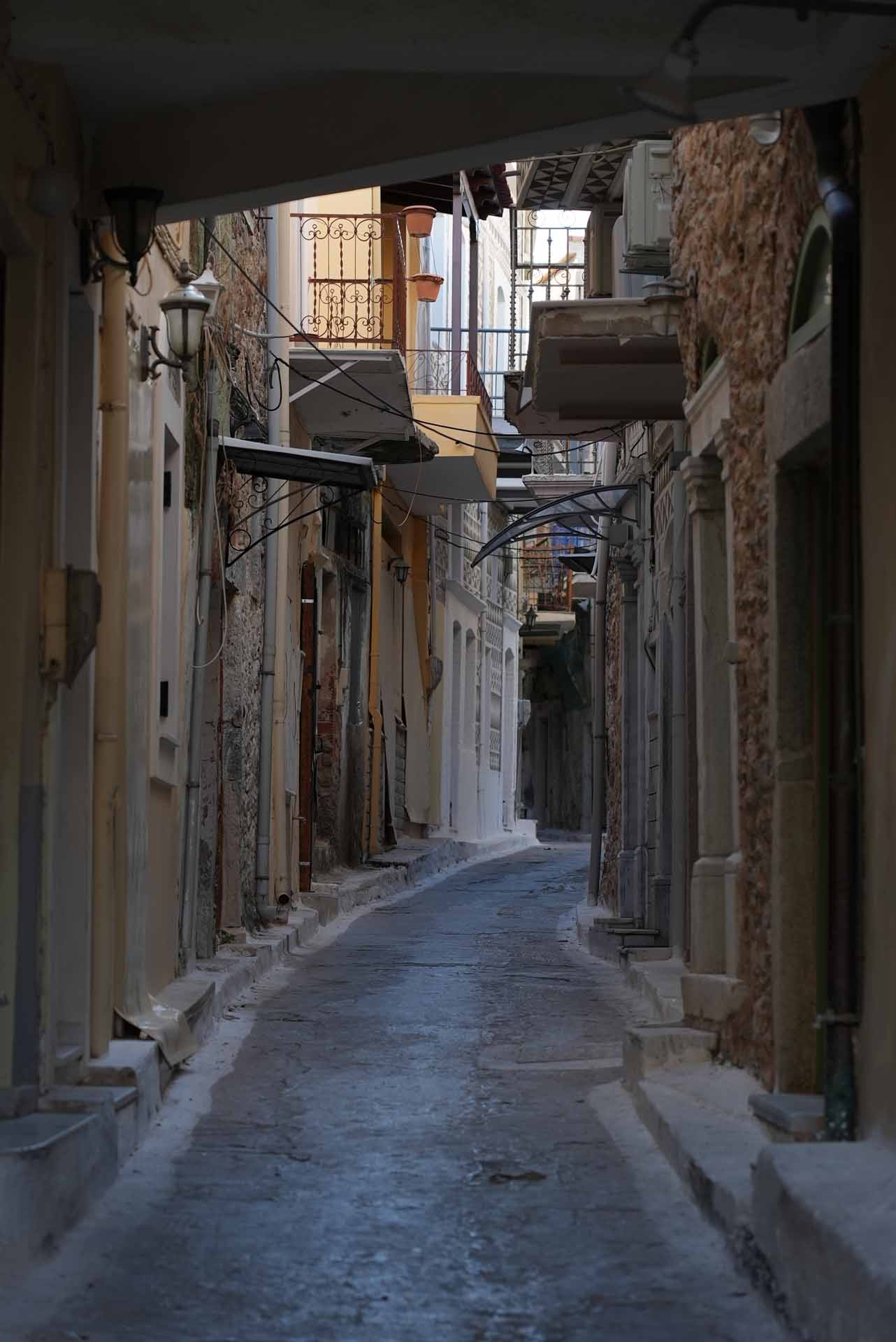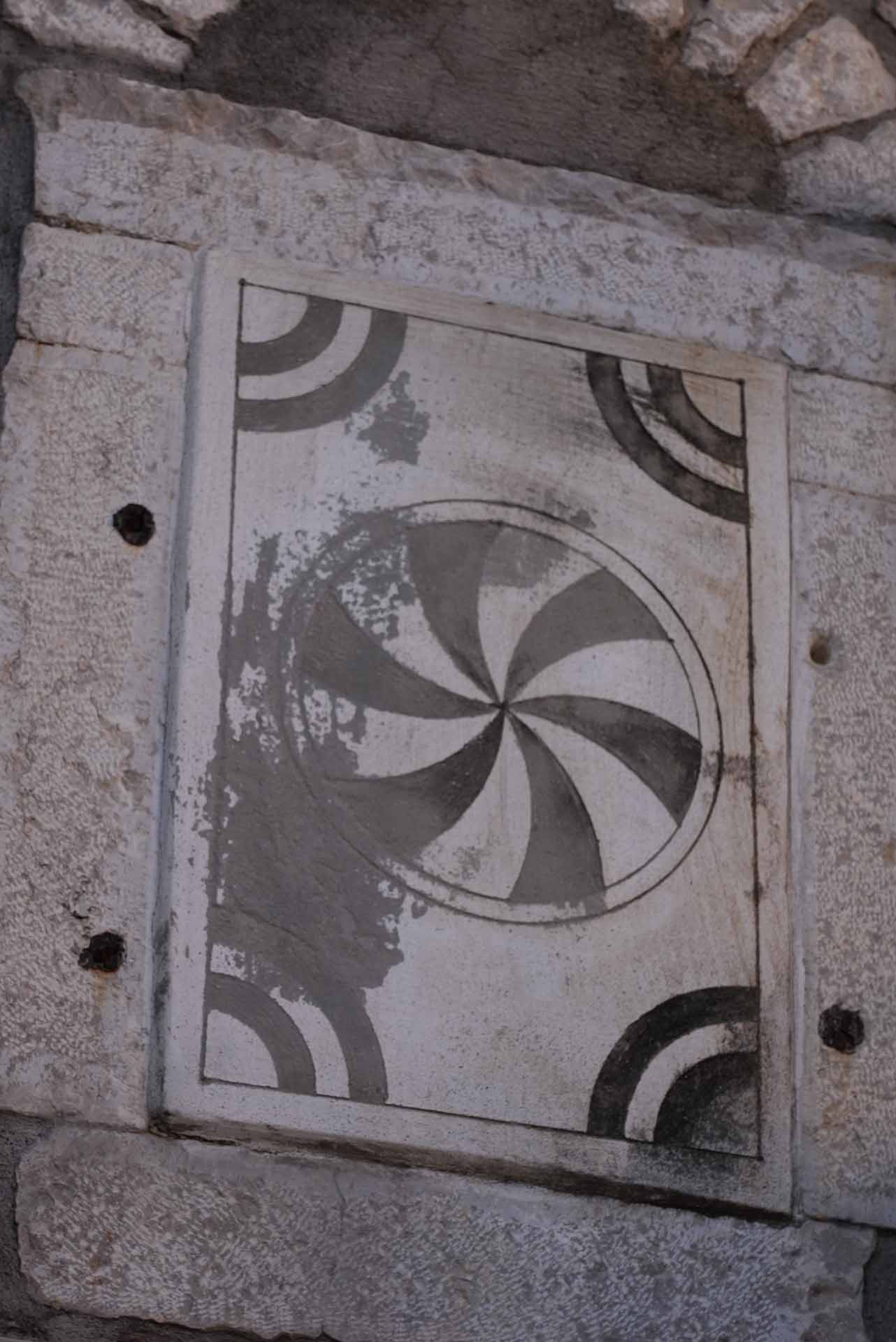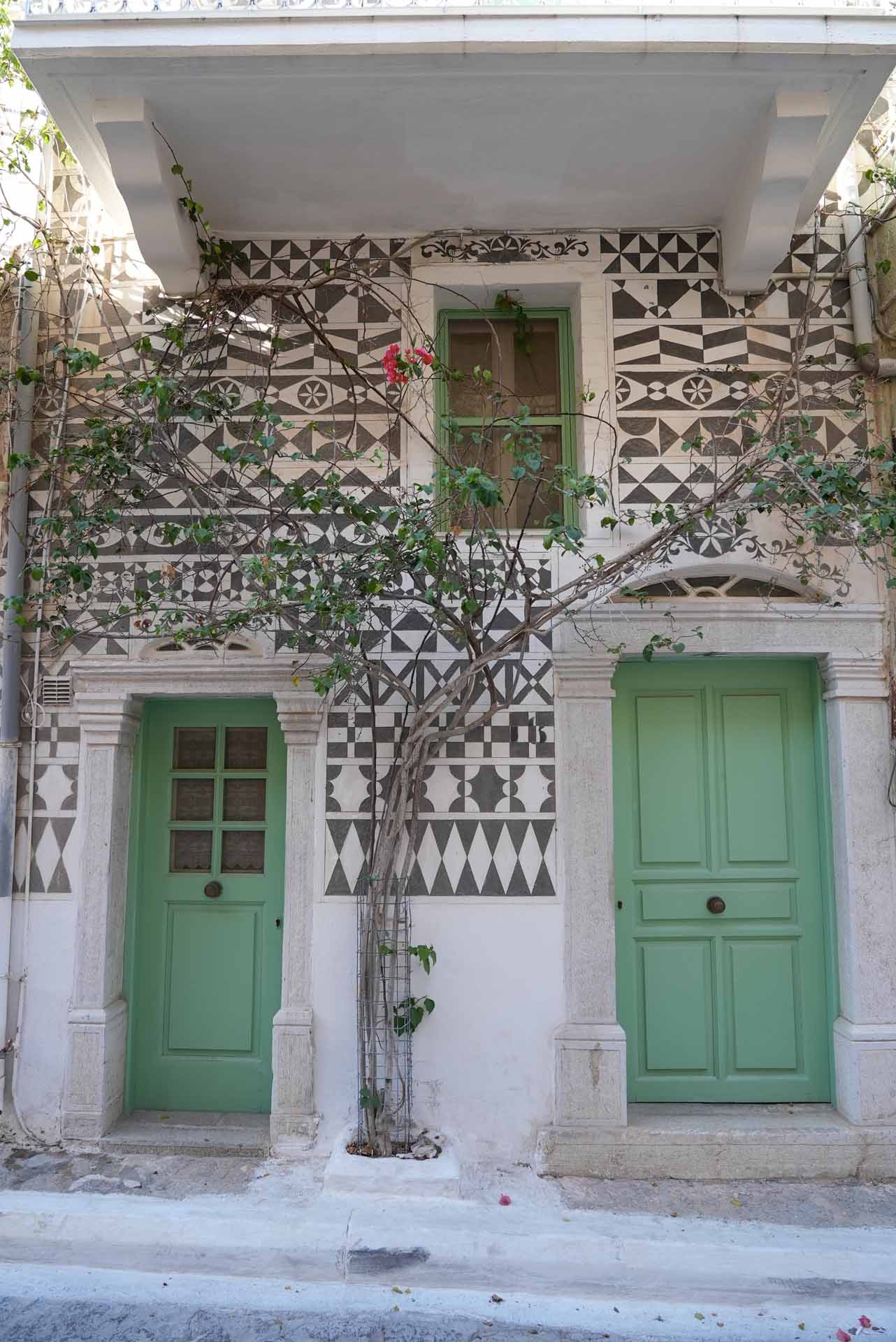Pyrgi is the largest of Chios’ 21 mastic producing villages and owes its name to the tall tower around which the current village was built. The settlement dates back to the late 14th and early 15th centuries, during the Genoese occupation. It is a fortified medieval village, with outer houses forming a perimeter wall with no windows or doors facing outwards, while the interior features a dense network of narrow streets in a quadrilateral shape. Each corner once had a small tower, forming a protective wall, though this is no longer visible. However, the inner layout remain intact, giving the village a labyrinth-like appearance.
Pyrgi is the only place in Greece where the unique art of xysto (scraped) is found on building facades. This decorative art involves geometric patterns etched and scraped onto fresh plaster. It is believed that the art was brought to Chios from Italy during population movements. The craftsmen created various geometric patterns, resembling the Italian sgraffito technique, which has roots in Renaissance architecture. Local craftsmen still practice it today using cement, lime, and sand, with a coating of whitewash to achieve the white color. Once the material dries, they use metal tools to carve the designs, followed by scraping with a fork to create the geometric motifs.
Pyrgi is a living medieval monument, largely undamaged by the 1881 earthquake, and still retains its appearance. Among its notable churches are the Church of the Apostles, the Church of Taxiarhis, and others like Saint Paraskevi and Saint Stefanos. Pyrgi’s churches were ecclesiastically independent from the rest of Chios, and the village served as the seat of a bishop.














